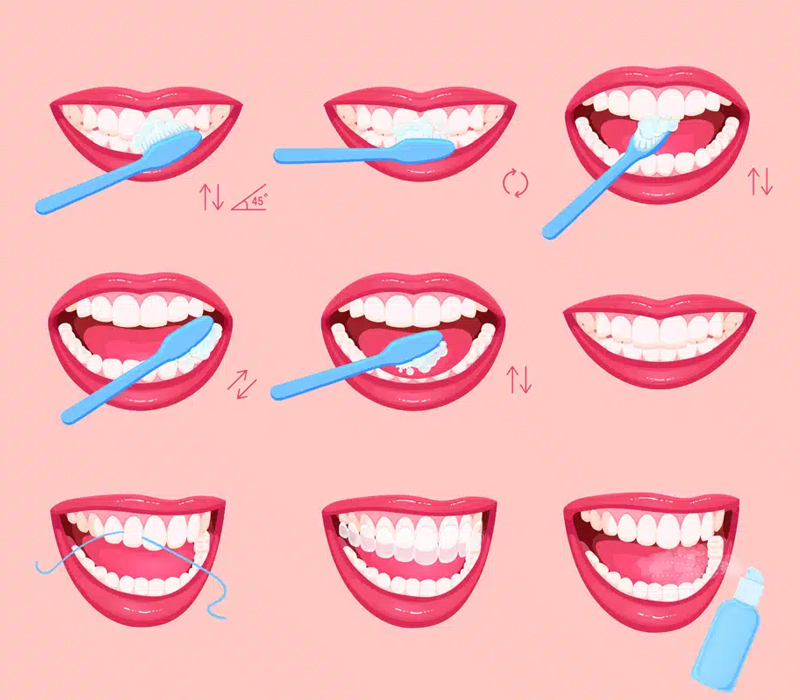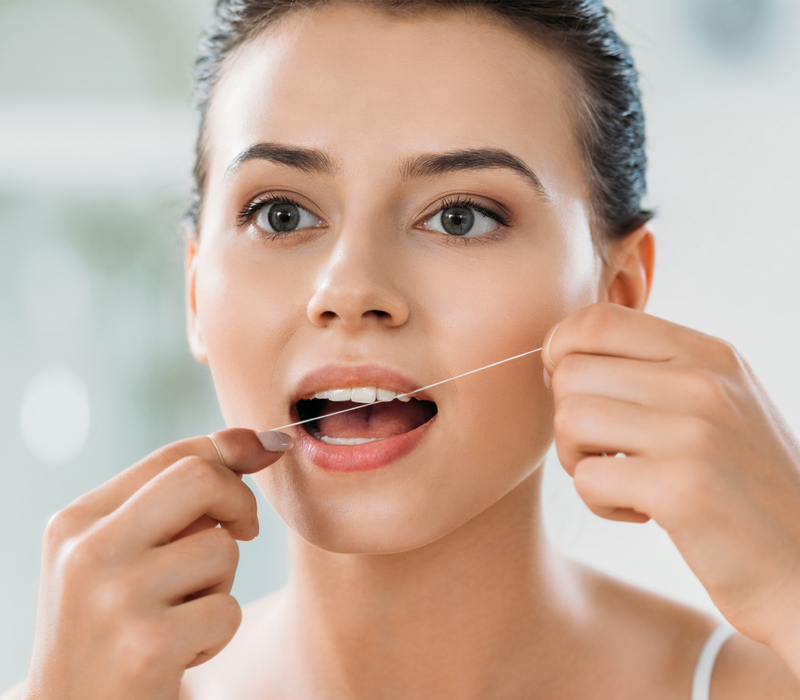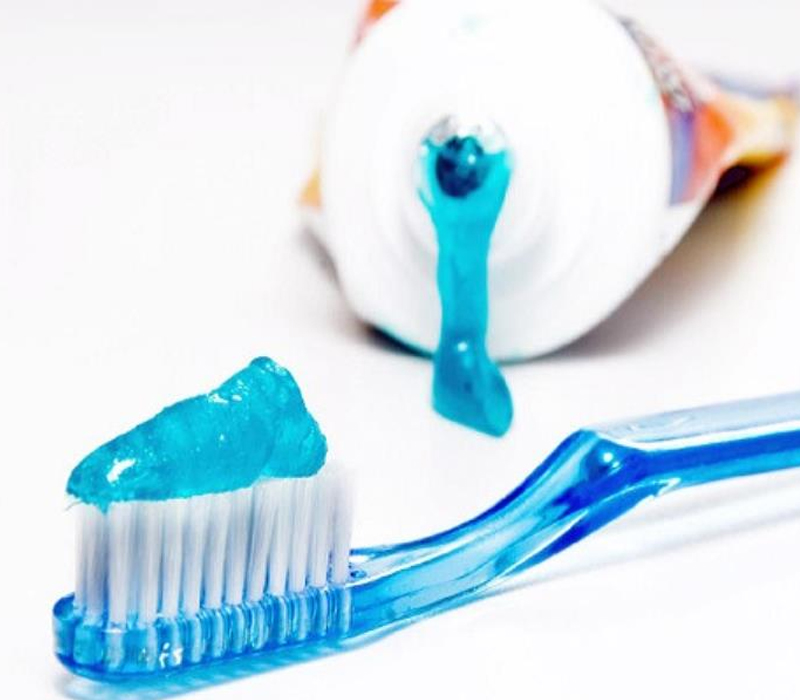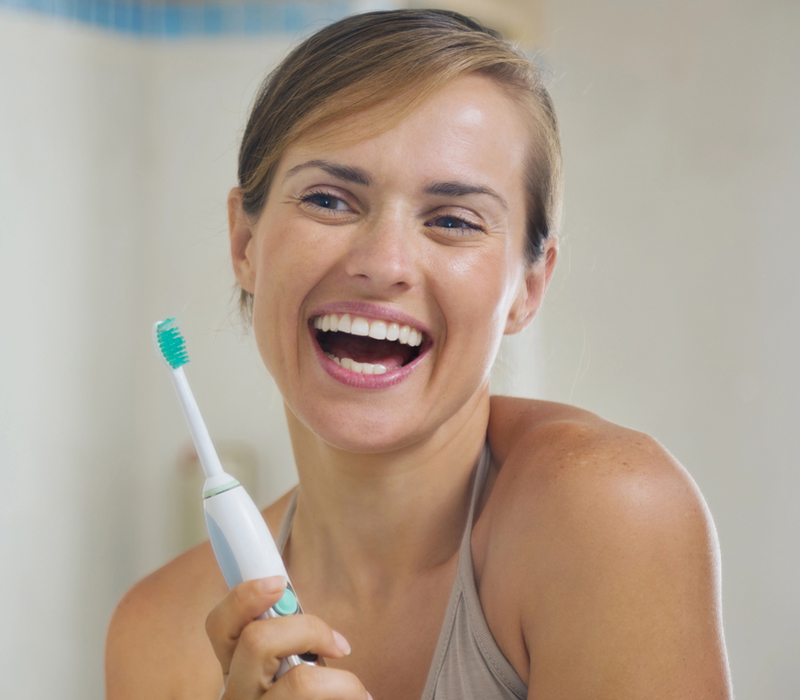Oral Health

How to Brush Your Teeth
The first step is to choose a good toothbrush. You always want to use a soft brush with a small head. A soft brush is hard enough to remove plaque, yet gentle enough not to damage your teeth or gums. The next issue is to select good toothpaste. In general, any toothpaste that contains Fluoride will do the job, unless you have special needs that are determined by your dentist. Two of the best brands of toothpastes are Colgate Total and Crest Multicare.
The first rule of brushing is to start from a specific location and work your way to the opposite side, continuing all the way through the whole mouth so that you end where you started. This way you won’t miss any area. Usually a pea-sized amount of toothpaste is enough. An adequate brushing should at least take 2 minutes and preferably around 4 minutes.
There are a variety of techniques for brushing your teeth, but one of the most popular ones is described here:
Hold the brush at a 45 degree angle toward the teeth and gums. Gently press against the gums so the tips of the bristles go in between the gum and the teeth. Then apply a few lateral strokes and roll down the brush to sweep the plaque away from the teeth and the gum. Repeat this motion 6 to 10 times and move on to the next area of 2 to 3 teeth. If your mouth is full of foam, spit out and continue brushing. Your brushing is completed when you have brushed all the surfaces of your teeth, not when your mouth is full! On chewing surfaces, short strokes work best to get the plaque out of the grooves and pits. When brushing the back side of your front teeth, hold your brush vertically to be able to reach the teeth better.
As far as frequency of brushing is concerned, ideally you want to brush your teeth after each meal. But if you can’t, brush at least twice a day- after breakfast and before going to bed.

How to Floss your Teeth
The surfaces that are between teeth are not accessible to brush; therefore, the best way to clean them is by flossing. The frequency of flossing is like brushing and ideally after each meal, though one time a day (before going to bed) is the minimum necessary.
To start, cut a piece of dental floss (approximately 2 feet). Wrap both sides of the floss around your middle fingers. Using your index and thumb, glide the floss in between all your teeth one by one. When flossing, make sure you are not cutting your gums. The goal is to clean the teeth surfaces, not the gums. In the space in between teeth, press the floss against each side of the tooth (hug the tooth) and gently move it back and forth and up and down. Then move to the opposite surface of the adjacent tooth.

Fluoride and Decay Prevention
Many years ago scientists started to notice that children who were born and raised in areas with natural fluoride in drinking water had fewer cavities than children in other areas. Fluoride absorbed by your body when teeth were forming (during mother’s pregnancy to early childhood) integrates into the structure of enamel and makes it stronger.fluoride
After teeth eruption, fluoride found in your toothpaste, mouthwash, or in what your dentist places on your teeth still has a positive effect on your teeth. It strengthens the enamel and reduces the chance of tooth decay.
If you have children and live in an area that has no fluoride in its drinking water, you should consult your dentist and physician about fluoride tablets that are available for children.

Electric Brush versus Manual Brushes
There have been multiple studies comparing the effectiveness of manual brushes as opposed to electric brushes.electric brush
Although not all electric brushes are the same, these studies conclude that in general electric brushes are more efficient in controlling plaque than manual brushes. Theoretically, you can do a very good brushing with a regular hand brush, but the movements of an electric brush make the task easier and more effective.
Also, some electric brushes (Sonicare) produce sonic vibrations that are difficult to mimic with a hand brush! Other electric brushes like Oral-B and Rotadent have small heads that help you access hard-to-reach areas of your mouth. This aspect is more important when you are talking about someone with orthodontic braces or a history of gum disease.

Bad Breath
There are a few different causes of bad breath. Ranging from stomach problems to diets and teeth problems, most of the causes can be found in the mouth. They are:bad breath
- Tongue (when bacteria grows in between the papilla)
- Teeth cavities (especially when food particles get stuck in them)
- Gum diseases
- Extraction sites during healing
- Dentures when not cleaned properly
- Alcohol and tobacco
If you or someone you know is concerned about bad breath, the first step is a dental check up. Your dentist will be able to confirm or rule out the source of bad breath.
When the cause is found, treatment will be determined and explained by your dentist. If the source of the bad breath is your mouth, there is little chance that mouth washes or mints can treat the problem. They usually mask the problem for a short period of time, and can sometimes exacerbate the situation (mouthwashes that contain alcohol cause dry mouth and usually make the bad breath worse).
These are a few other, non-dental reasons that cause bad breath:
- Sore Throat
- Tonsillitis
- Some food
- Infection of air passages

Dental Health and Your Diet
Sugar is the main cause of dental decay when there are bacteria present. More significant than the amount of sugar you eat is the frequency of consumption. diet
Probably the worst thing you can do to your teeth is to drink a soda and have a sip every few minutes over a long period of time; the same is true for snacking. It is recommended that if you want to have a snack or soda or juice it is better to have it after food, as dessert, or have it in one sitting. Eating or drinking something sweet over an extended period of time creates a constant supply of sugar for bacteria that causes tooth decay!
It is important to be aware of all the sources of sugar that are out there. It is not just everything that is sweet, but anything that can turn to sugar like pieces of bread. Cutting down your sugar intake is good for cavity prevention, as well as your general health.
But what about when you have to have sugar? The best way to avoid cavities is to prevent the sugar from staying next to your teeth. Brushing after eating sugar, rinsing your mouth with Fluoride mouth wash, or chewing sugarless gum can help. However, nothing has the effect of avoiding sugar!
Is there any kind of food that prevents tooth decay? Well, not really. Some people believed that chewing foods like apples and carrots may have some plaque removal effect, but they still contain some sugar so any advantage is not clear.
Another group of food that causes significant damage to teeth structure is acidic foods. If in frequent contact with teeth, things like lime, lemon, and grapefruit can cause serious irreversible damage (erosion) to your teeth.
What Our Patients Say
Holly Family Dental
4.9Out of 5 stars




Overall rating out of 192 Google reviews

Alexandra Costello

Everyone at this office was amazing! My husband and I both had a great experience.

Heather Parks

Very friendly environment!! Great staff!!

Lora Franzem

They are very nice really love the doctor Way she’s so good and helpful

Travis Willison

They did an excellent job with my daughter Emalee. She is 5 and felt very comfortable with everyone during her visit!

Kim Hinson

Great office!!Highly recommend!!

Abigail Kaleen

Very welcoming and friendly environment. Very glad I found a dentist office I like. Got my wisdom teeth removed here and they did an awesome job!

Nicole Burton

We have been to many dentists and this is by far my whole family's favorite. I never have to worry if I will get a "bad" hygienist or dr. All the staff is amazing. The billing is very clear and they communicate billing and scheduling very well. They are great with children and a huge bonus - it is never an issue for me to go back with my children

Michele Brown

First time at a dentist in about 8 years. The entire crew made my experience so nice. Very professional yet friendly. Made my whole experience comfortable, I have found myself a new Dentist 😁

Kathy Levens

Holly Family Dental - I Love them all, Dr. Coop is gentle, easy to communicate with, she’s a great dentist. The office staff, like Dr Coop are caring, and always positive, and patient. I am so grateful to have been introduce to this group of awesome dental people😁 God Bless you all!

jamie fromwiller

Fantastic service! This place has it all. The check in is streamlined and easy. They made dentistry seem simple. Check them out! I have never liked the dentist more!

Barry

Went in for an extraction ,the whole experience was great from the start to finish. Very pleasant staff

Chris Riley

Everyone at the office is smiling and willing to talk you through what is going on with your teeth. They go the extra mile so you have all the knowledge of the cleaning and dental exam.

Lisa Carter

I was overdue for a checkup but everything went great and everyone was friendly and made you feel comfortable. Beth was a great hygienist and was very gentle! I told her I had trouble holding my mouth open wide and she put in a mouth guard that holds it open. It was so comfortable and so much easier. If you’re weary about going to the dentist you must come here!

Audrey Drahos

Great hygienist and doctors! My whole family enjoys our visits to holly dental ! They are the best!

Michael Tener

I had my first appointment with Dr. Way and her assistant Lisa today for an emergency toothache. Both Lisa and the Dr were amazing, even though I have significant dental issues they made me feel very comfortable and like a family member. They were able to help me navigate my insurance so I knew what was covered. I will be making them my dentist office for all future dental needs. Thank you Lisa and you as well Dr. Way I really appreciate the level of care and concern you provided me, and thank you to the rest of your staff also. Very professional practice thanks again

Crystal T

Very polite and professional staff. Always greeted by my name and with a smile. 😃
